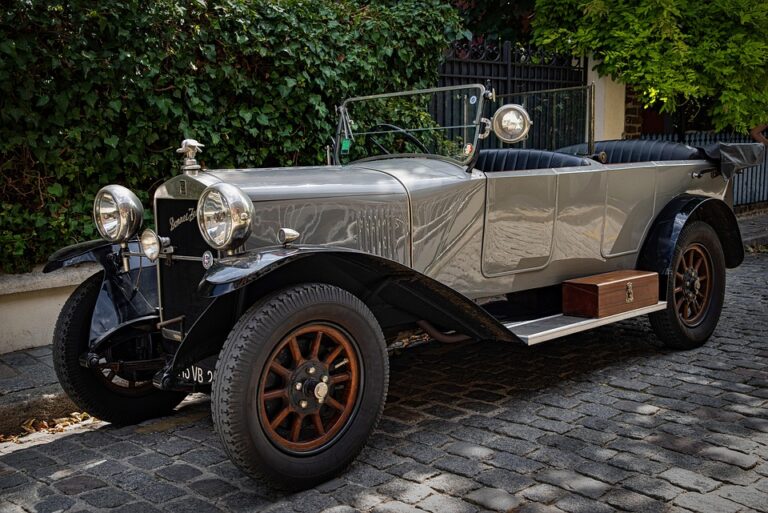From Muscle to Elegance: The Diverse World of Classic Cars
Classic cars hold a special place in the hearts of enthusiasts and collectors alike. These timeless automobiles, which range from the powerful muscle cars of the mid-20th century to the luxurious and elegant vehicles of the 1950s and beyond, represent not just modes of transport but pieces of history. In this article, we explore the diverse world of classic cars, their various styles, the evolution of automotive design, and their continued allure in today’s market.
The Evolution of Classic Cars
Muscle Cars: The Icons of Power
Muscle cars emerged in the 1960s as America’s answer to the need for speed and power. Characterized by their big engines and aggressive styling, these vehicles—including classics like the Ford Mustang, Chevrolet Camaro, and Dodge Charger—rallied a generation of car lovers who craved performance.
Muscle cars are recognized for their distinct characteristics:
- High horsepower and torque: Designed for straight-line speed, these cars boasted engines with power that can only be described as exhilarating.
- Bold designs: From the wide wheelbases to the sleek silhouettes, the aesthetics of muscle cars exude an aura of bravado.
- Cultural significance: They symbolize freedom and rebellion, often connected to the youth culture of the 1960s and 70s.
The appeal of muscle cars extends beyond their mechanical prowess; they serve as a reminder of carefree days on the open road. Collectors often find joy in restoring these iconic vehicles, taking part in car shows, and joining clubs that celebrate their history.
The Elegance of Classic Luxury Cars
In contrast to the muscle car’s raw power, classic luxury cars emphasize comfort, style, and sophistication. Brands like Rolls-Royce, Cadillac, and Mercedes-Benz epitomize elegance and design innovation. Notable features of classic luxury cars include:
- Exquisite craftsmanship: Crafted with quality materials and attention to detail, these cars boast luxurious interiors and finishings.
- Innovative technology: Advanced for their time, many luxury classic cars showcased innovative features such as power windows and air conditioning.
- Timeless designs: From the majestic lines of a 1950s Cadillac Eldorado to the refined silhouette of a Rolls-Royce Silver Cloud, these vehicles often become status symbols.
Classic luxury cars not only offer a nostalgic glimpse into automobile history but also drive a demand among collectors eager to own a piece of elegant engineering. Their value appreciates over time, making them excellent investment choices.
The Classic Car Collector’s Journey
Finding Your Niche
For new collectors, the classic car market can be overwhelming. It’s essential to identify which niche resonates with you—be it muscle, luxury, or even vintage sports cars. Here are some tips:
- Research: Engage with communities, forums, and social media groups to gain insights.
- Attend car shows: These events offer an opportunity to view different models and connect with fellow enthusiasts.
- Network: Building relationships with other collectors can lead to valuable advice and connections for potential purchases.
Restoration vs. Preservation
Once you have selected your classic car, you’ll face the decision of whether to restore or preserve it. Restoration involves bringing the car back to its original condition, often including repainting and replacing worn parts. In contrast, preservation maintains the car’s current state, focusing on minimizing further wear and tear. Both approaches have their merits:
- Restoration enhances value and often improves performance.
- Preservation retains the car’s history and originality, appealing to purists.
Trends in the Classic Car Market
The classic car market remains dynamic, influenced by various factors:
- Rising appreciation for vintage cars: As younger generations aspire to own classic cars, demand continues to grow, particularly for models that resonate with their upbringing or aspirations.
- Electric classic cars: The rise of electric vehicle technology has sparked interest in retrofitting classic cars with modern batteries and drivetrains, marrying the nostalgia of classic designs with contemporary eco-friendliness.
- Investment potential: Classic cars can serve as a hedge against inflation, often appreciating in value over time. Notable models can see returns that significantly outpace traditional investments.
Conclusion: The Lasting Appeal of Classic Cars
From muscle cars that evoke adrenaline and excitement to the elegance of luxury vehicles that represent opulence and craftsmanship, classic cars encompass a rich and diverse world. Whether you are a seasoned collector or a newcomer to the classic car community, there is always something new to learn and discover.
The classic car industry continues to flourish, driven by a passion for history and nostalgia. As you consider entering or expanding your place in this vibrant world, remember that each classic car has a story to tell—a blend of art, engineering, and culture that transcends time.
Explore more about classic cars and immerse yourself in this captivating journey of automotive history. Whether you are looking to buy, restore, or simply appreciate, the world of classic cars awaits your passion and enthusiasm.


